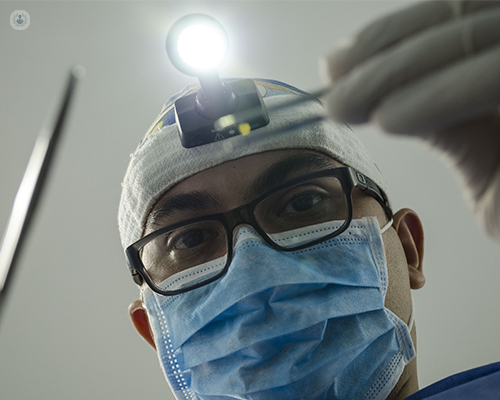Dental implants and guided surgery
Escrito por:A dental implant is inserted directly into the gum to replace the root of a lost tooth, and this new implant allows your dentist to place a new crown on top. The term “guided surgery” refers to the use of advanced technology within the dental implant procedure and it greatly increases the level of accuracy. Dr Olurotimi Adesanya explains how guided surgery differs from freehand surgery, who should have it, its success rate and more.

What is guided surgery?
During any implant surgery, a dental implant is inserted into the bone under your gum and allows your dentist to place a replacement tooth into your mouth.
During implant guided surgery, your dentist inserts the dental implant with the aid of a digitally designed surgical guide. This guide is created by applying information from a dental cone-beam tomography (CBCT) 3D scan and a digital impression of your mouth.
How does it differ from traditional freehand surgery?
Implant guided surgery differs from traditional freehand surgery largely due to its advanced imaging technology.
The digitally designed surgical guide has the potential to offer the highest level of precision and control during the procedure. The technology ensures that the implant is placed even more accurately and efficiently than with traditional freehand. Additionally, guided implant surgery is quicker than freehand.
Why would I need guided surgery?
Anybody who needs a dental implant will benefit from guided surgery because it allows the dentist to make a very clear assessment of the mouth. By doing so, the implants are placed precisely and exactly where expected. Also, with guided surgery, the dentist is able to identify any problems from the CBCT 3D scan and address them before the surgery is performed.
How is it decided that it’s the right method for my case?
Following a thorough clinical assessment and investigation, your dentist will be able to advise you on if guided surgery is the most beneficial option. If you are a suitable candidate for a dental implant, then you are most likely suitable for guided surgery.
How does guided surgery work with tooth implant placement?
With the digitally manufactured guide, the dentist can place the implant. This guide is highly precise and the implant will be placed in the exact area as planned. This ensures that the procedure is safe and no vital structure within the mouth is damaged.
How accurate is the procedure? What’s the success rate?
As long as the digital guide is made carefully with no errors or manufacturing inaccuracies, guided implant surgery is even more accurate than freehand.
Dental implant procedures have a success rate of over 90% in patients who are in good general health and free of oral cavities. Guided implant surgery contributes greatly to this success rate due to its capacity to be incredibly precise and to reduce surgical time, which ultimately helps to reduce post-op pain and swelling.
Dr Olurotimi Adesanya is an expert in many aspects of dentistry, including oral surgery, cosmetic dentistry, digital dentistry and dental implants. Don’t hesitate to book a consultation via Dr Adesanya's Top Doctors profile for your dental needs.


